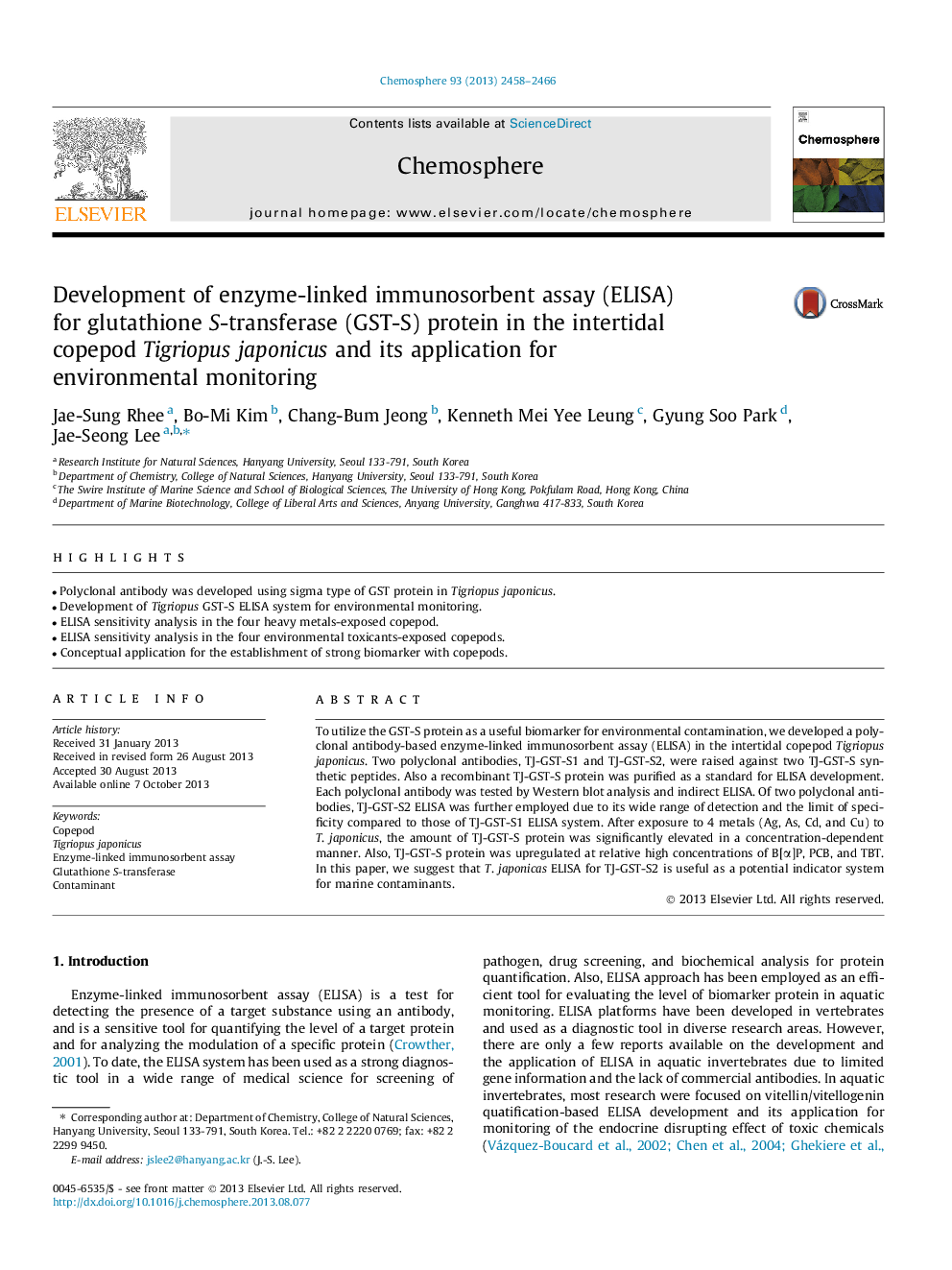| Article ID | Journal | Published Year | Pages | File Type |
|---|---|---|---|---|
| 6309626 | Chemosphere | 2013 | 9 Pages |
Abstract
To utilize the GST-S protein as a useful biomarker for environmental contamination, we developed a polyclonal antibody-based enzyme-linked immunosorbent assay (ELISA) in the intertidal copepod Tigriopus japonicus. Two polyclonal antibodies, TJ-GST-S1 and TJ-GST-S2, were raised against two TJ-GST-S synthetic peptides. Also a recombinant TJ-GST-S protein was purified as a standard for ELISA development. Each polyclonal antibody was tested by Western blot analysis and indirect ELISA. Of two polyclonal antibodies, TJ-GST-S2 ELISA was further employed due to its wide range of detection and the limit of specificity compared to those of TJ-GST-S1 ELISA system. After exposure to 4 metals (Ag, As, Cd, and Cu) to T. japonicus, the amount of TJ-GST-S protein was significantly elevated in a concentration-dependent manner. Also, TJ-GST-S protein was upregulated at relative high concentrations of B[α]P, PCB, and TBT. In this paper, we suggest that T. japonicas ELISA for TJ-GST-S2 is useful as a potential indicator system for marine contaminants.
Keywords
Related Topics
Life Sciences
Environmental Science
Environmental Chemistry
Authors
Jae-Sung Rhee, Bo-Mi Kim, Chang-Bum Jeong, Kenneth Mei Yee Leung, Gyung Soo Park, Jae-Seong Lee,
